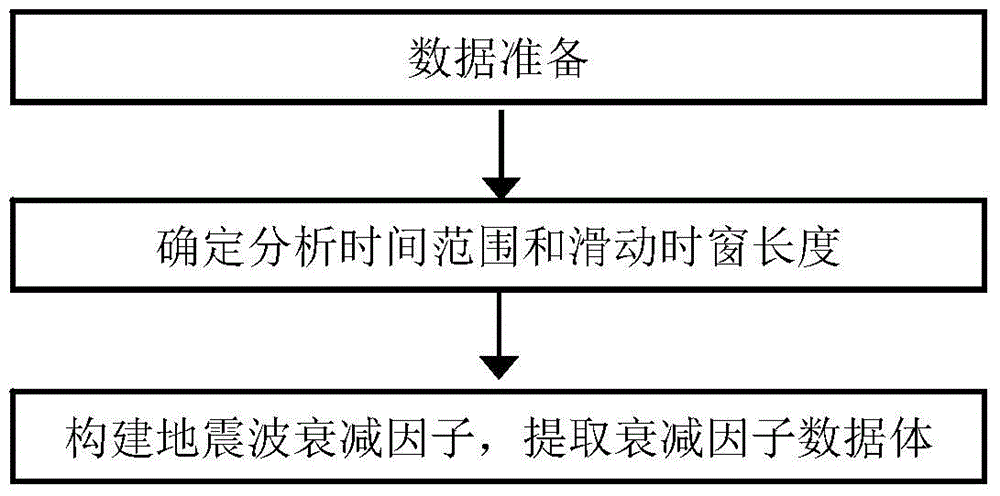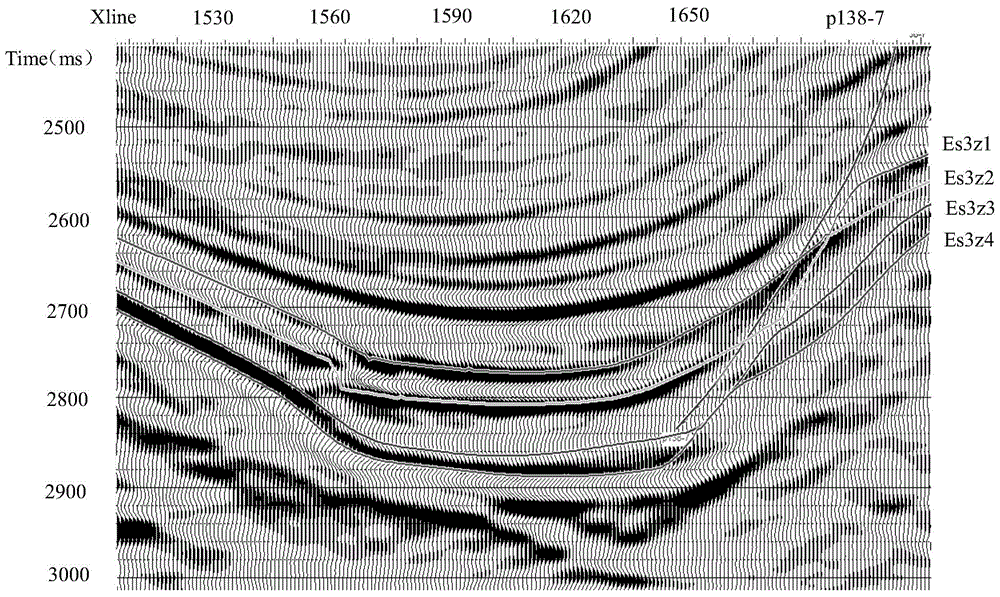Method for detecting oil and gas by aid of stacked seismic data
A seismic data, oil and gas detection technology, applied in the direction of seismic signal processing, etc., can solve the problems of low reliability, poor adaptability, insufficient stability, etc., and achieve the effect of enhancing identification ability and improving sensitivity
- Summary
- Abstract
- Description
- Claims
- Application Information
AI Technical Summary
Problems solved by technology
Method used
Image
Examples
Embodiment Construction
[0031] The following is an example of the detection of oil and gas in Pu 138 work area, Dongpu Sag, Bohai Bay Basin, China, and the present invention will be described in detail in conjunction with the accompanying drawings. Depend on figure 1 As can be seen, the present invention comprises the following steps:
[0032] 1. Data preparation: Obtain the seismic post-stack pure wave data of the work area, the coordinates of each well location in the work area, the thickness of the oil and gas-bearing layer of each well target interval, and the interpreted top and bottom time data of the target layer, figure 2 It shows a seismic profile marked with the location of well p138-7 and the bottom interface layers of Es3z1, Es3z2, Es3z3, and Es3z4. The time sampling rate of post-stack seismic pure wave data is 2ms, and the number of time sampling points is 2000; Table 1 shows that p138 -2, p138-3 and p138-7 wells Es3z2 and Es3z3 layer oil and gas thickness data.
[0033] Table 1 Stati...
PUM
 Login to View More
Login to View More Abstract
Description
Claims
Application Information
 Login to View More
Login to View More - R&D
- Intellectual Property
- Life Sciences
- Materials
- Tech Scout
- Unparalleled Data Quality
- Higher Quality Content
- 60% Fewer Hallucinations
Browse by: Latest US Patents, China's latest patents, Technical Efficacy Thesaurus, Application Domain, Technology Topic, Popular Technical Reports.
© 2025 PatSnap. All rights reserved.Legal|Privacy policy|Modern Slavery Act Transparency Statement|Sitemap|About US| Contact US: help@patsnap.com



